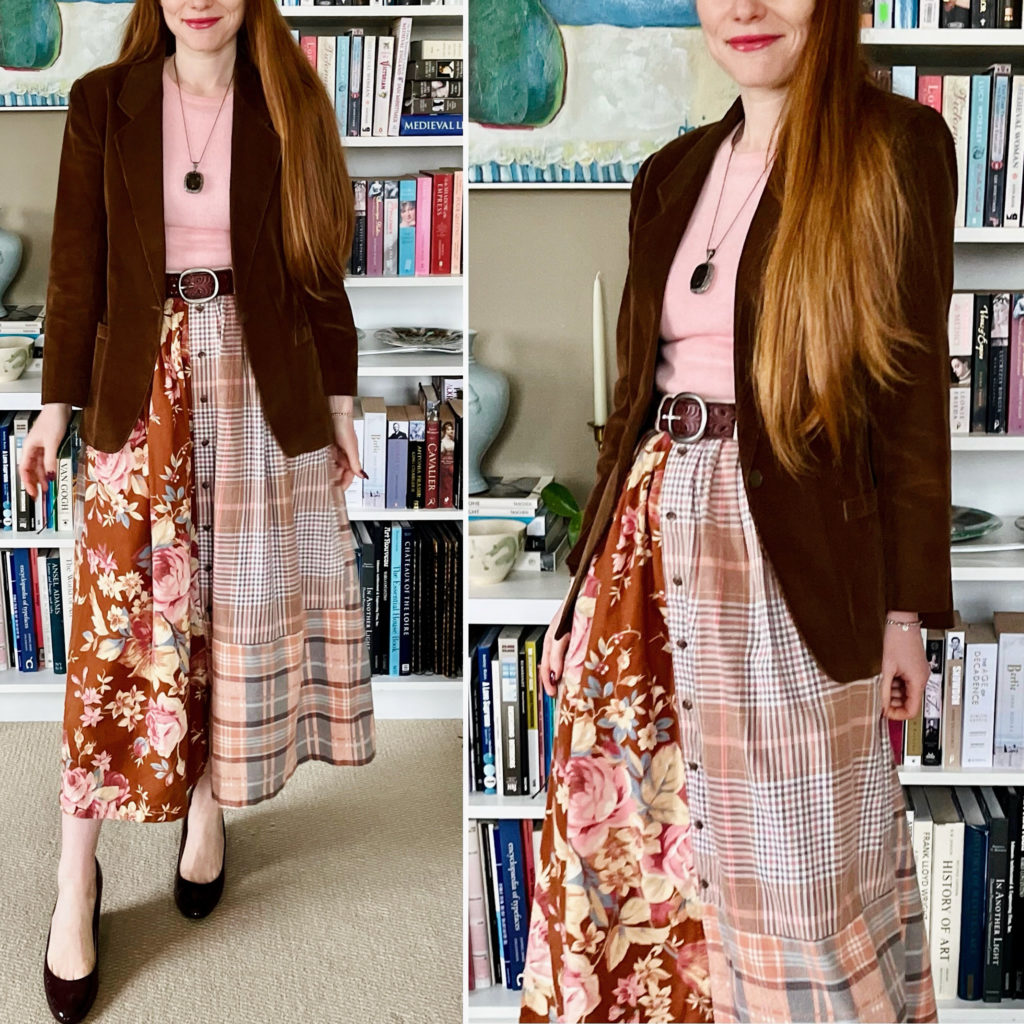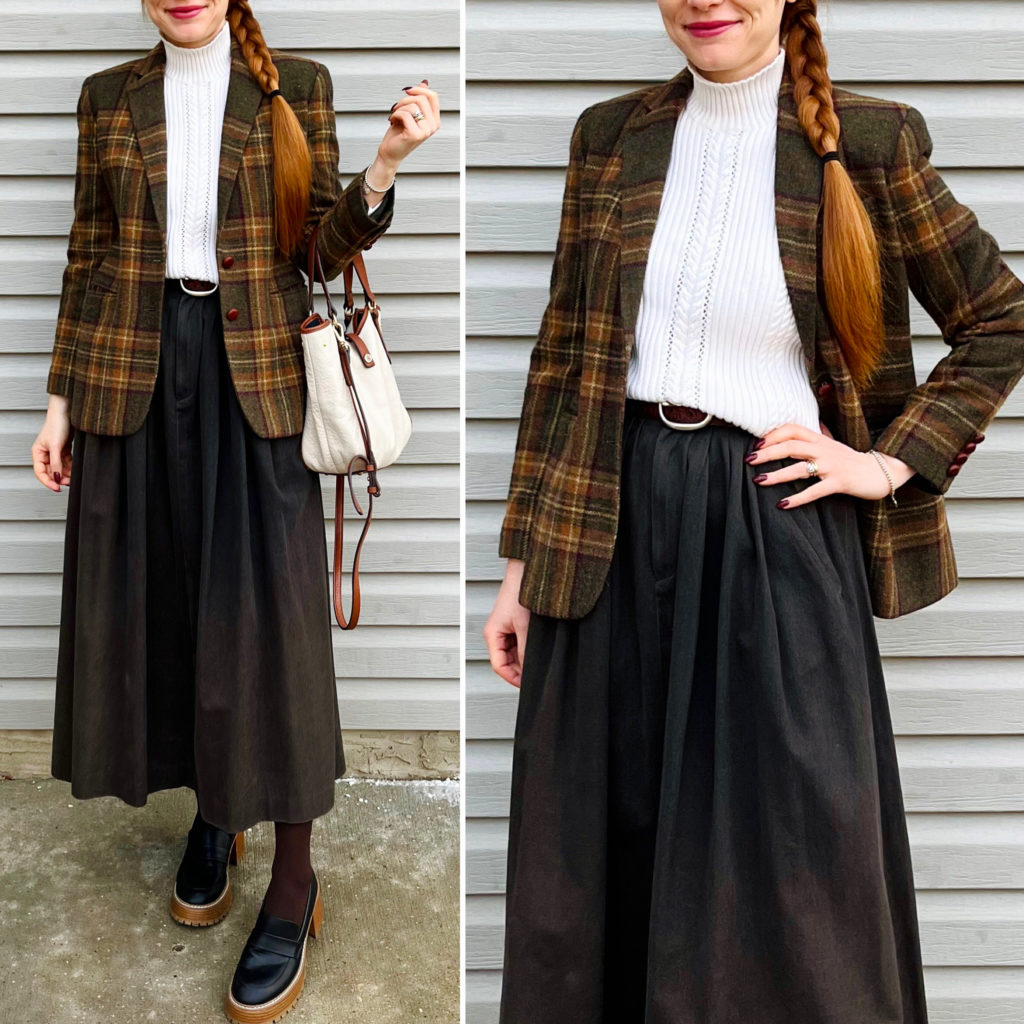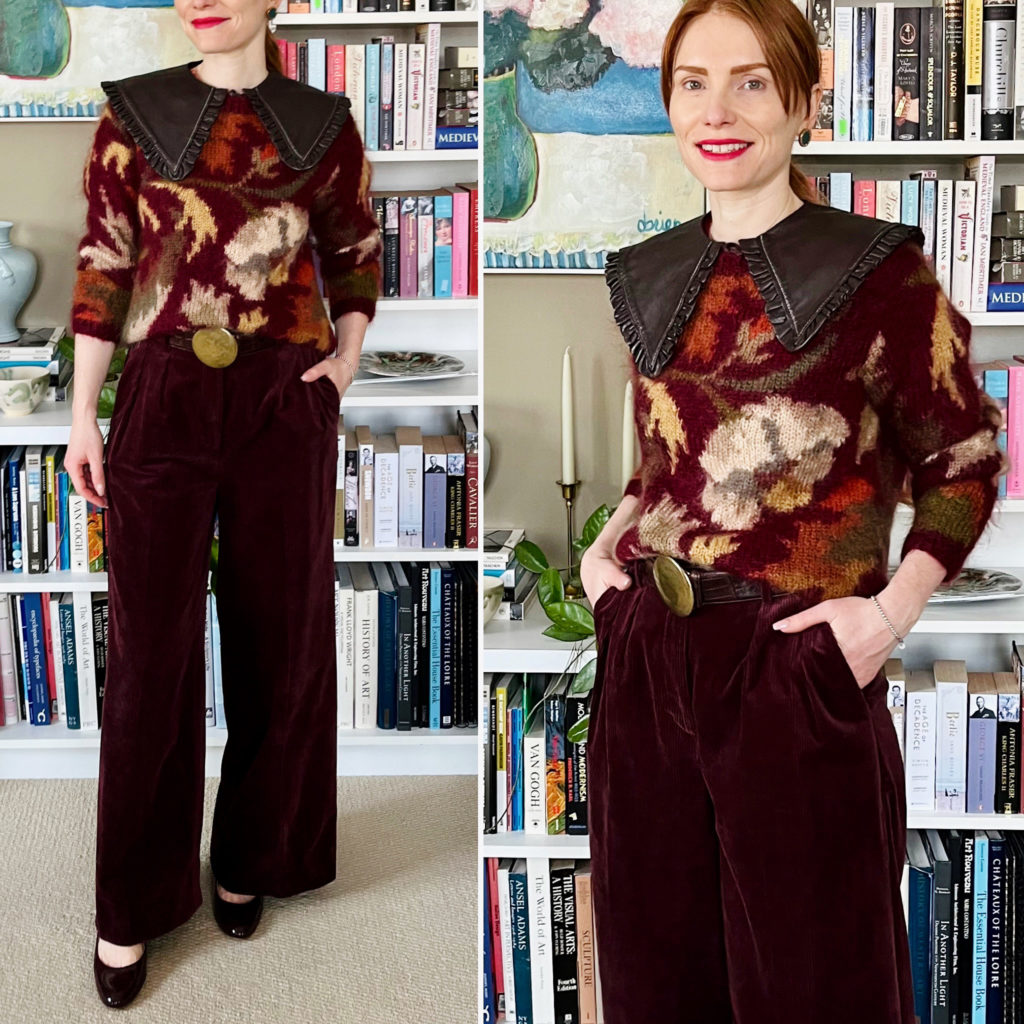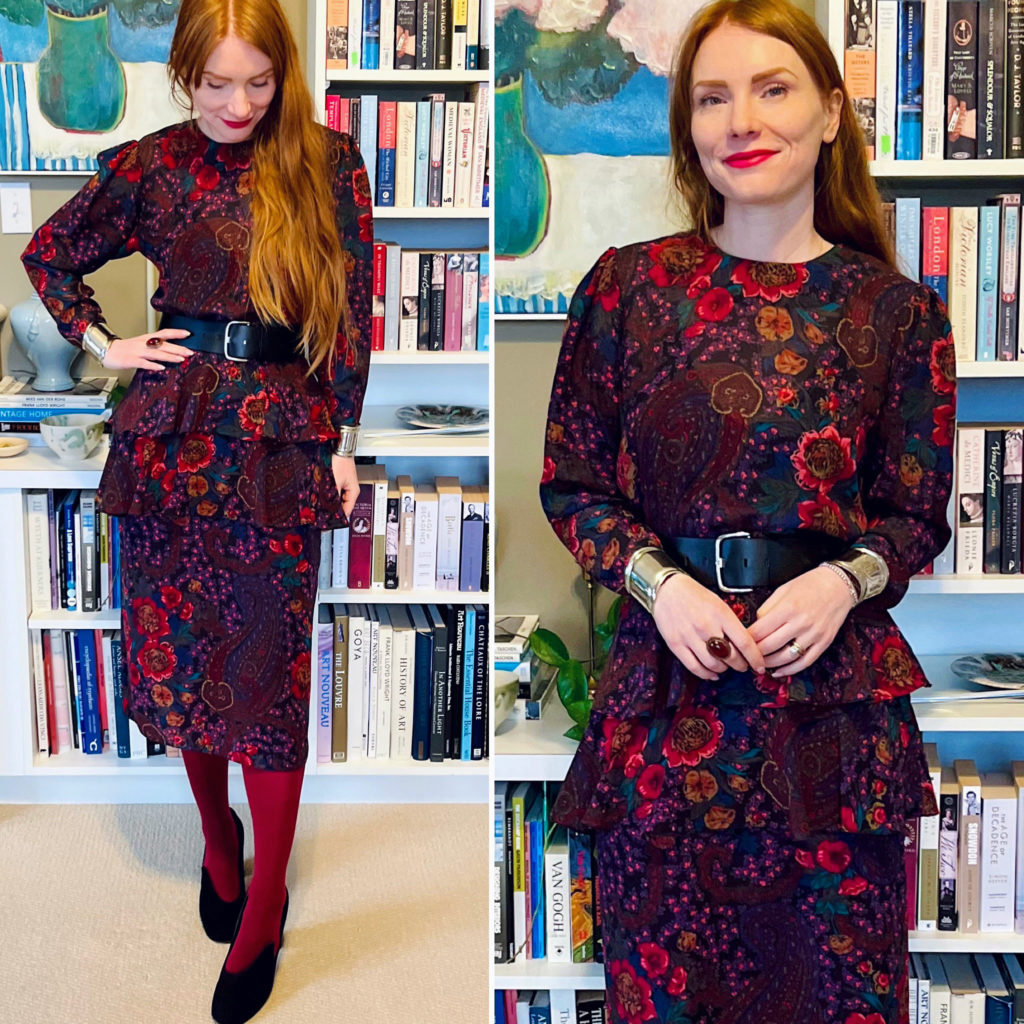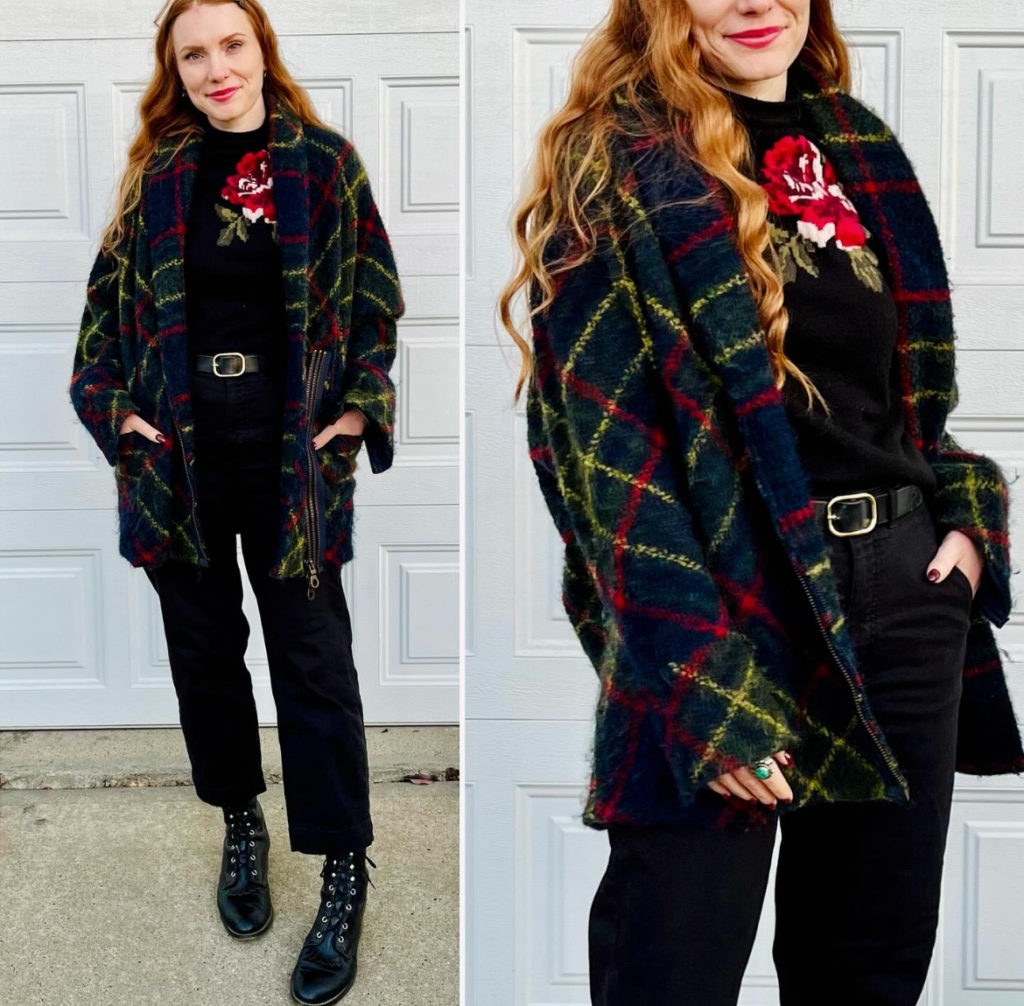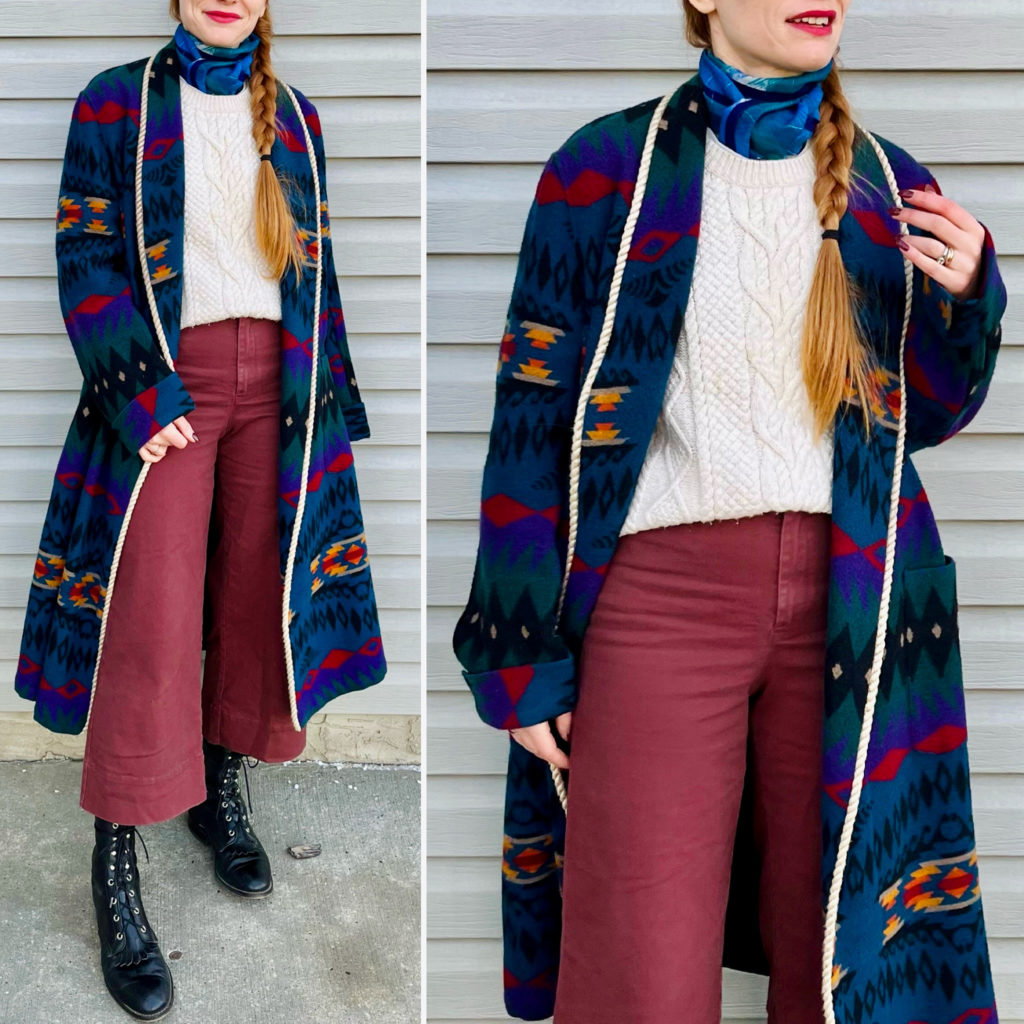Sweaters are some of my favourite things to thrift and wear, but they are not all made equal. A recent episode of the Clotheshorse Podcast titled “Why (Most) New Sweaters Are (Near) Future Garbage” delves into this topic with fashion industry insider information you will want to hear. I reached the same general conclusion simply through recent hands-on experiences. I touch a LOT of sweaters in the course of my thrifting and, boy, is there a lot of garbage out there. Itchy, thin, plasticky stuff that will inevitably end up clogging landfills for decades to come. I am not going to bury the lede here: the answer is vintage. The best quality sweaters most of us can currently get our hands on (without spending a bazillion dollars) are vintage ones. Pre-2000s sweaters are my personal obsession — more on that later — but quality really fell off a cliff after 2010 or so. Of course, there are good current pieces occasionally to be found, but you need to know what to look for.
So, what do we look for?
First and foremost, fiber content. If you’ve touched enough sweaters in your life — gosh, that sounds naughtier than it is — you’re probably able to tell what they’re made of without looking at a single tag. If you’re not quite there yet, tags can tell you everything you need to know. And don’t underestimate visual cues either.
Take this sweater:
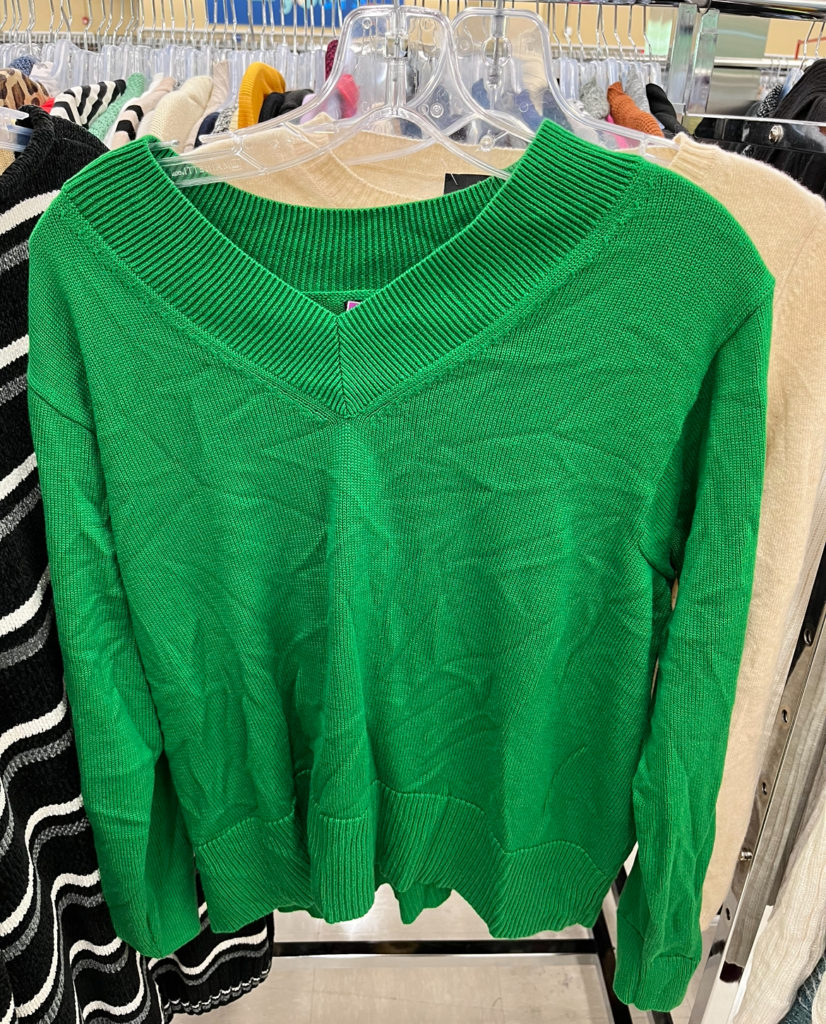
It’s Banana Republic Factory and was tagged at $13.99. It looked like-new, barely worn. But look at those wrinkles! They don’t look like they would steam out easily and if the sweater look that bad on the hanger, what will it look like after a few wears and washes? I immediately guessed that it would be a synthetic blend and I was correct. According to the tag, it’s 60% cotton and 40% rayon/viscose. You would think the cotton content would make this a decent option, but no.
Here is another example:
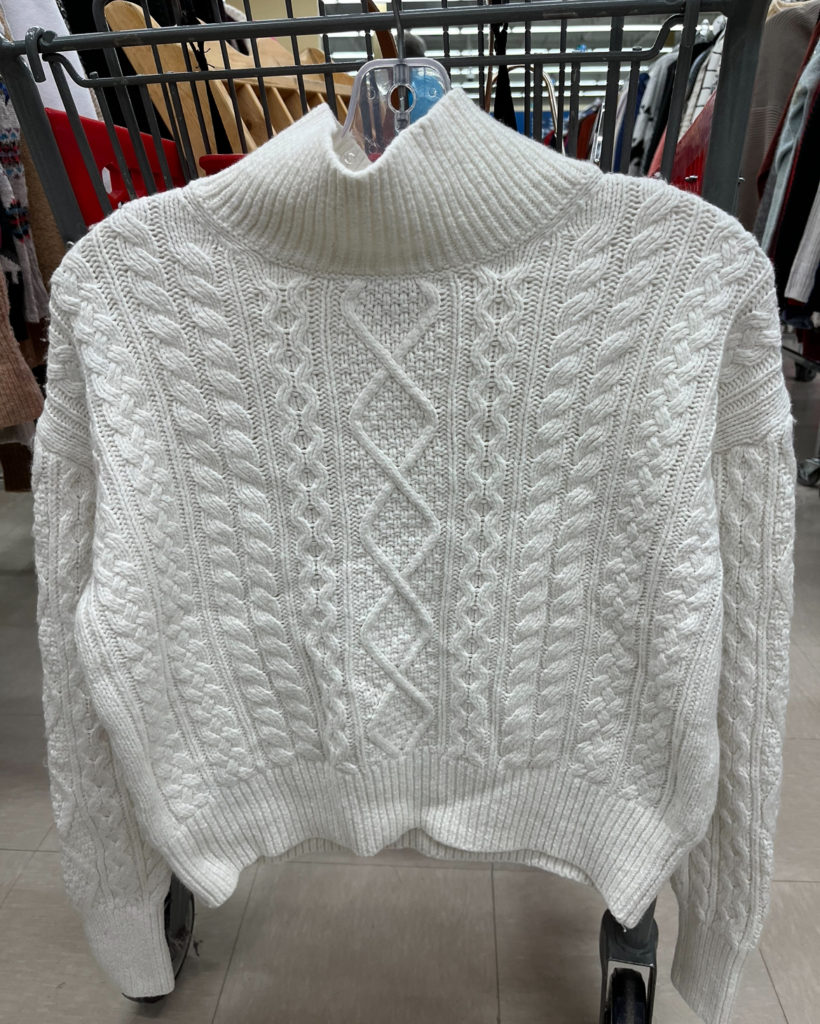
This is regular Banana Republic, I forget the price tag. Also looked relatively new, minus some minor pilling under the arms. A bit less wrinkly than the first one, but it still looks (and feels) thin and stiff at the same time. The fabric is another blend: 55% cotton, 37% nylon, 8% wool. Compare it to a vintage 100% cotton cable knit sweater I own:
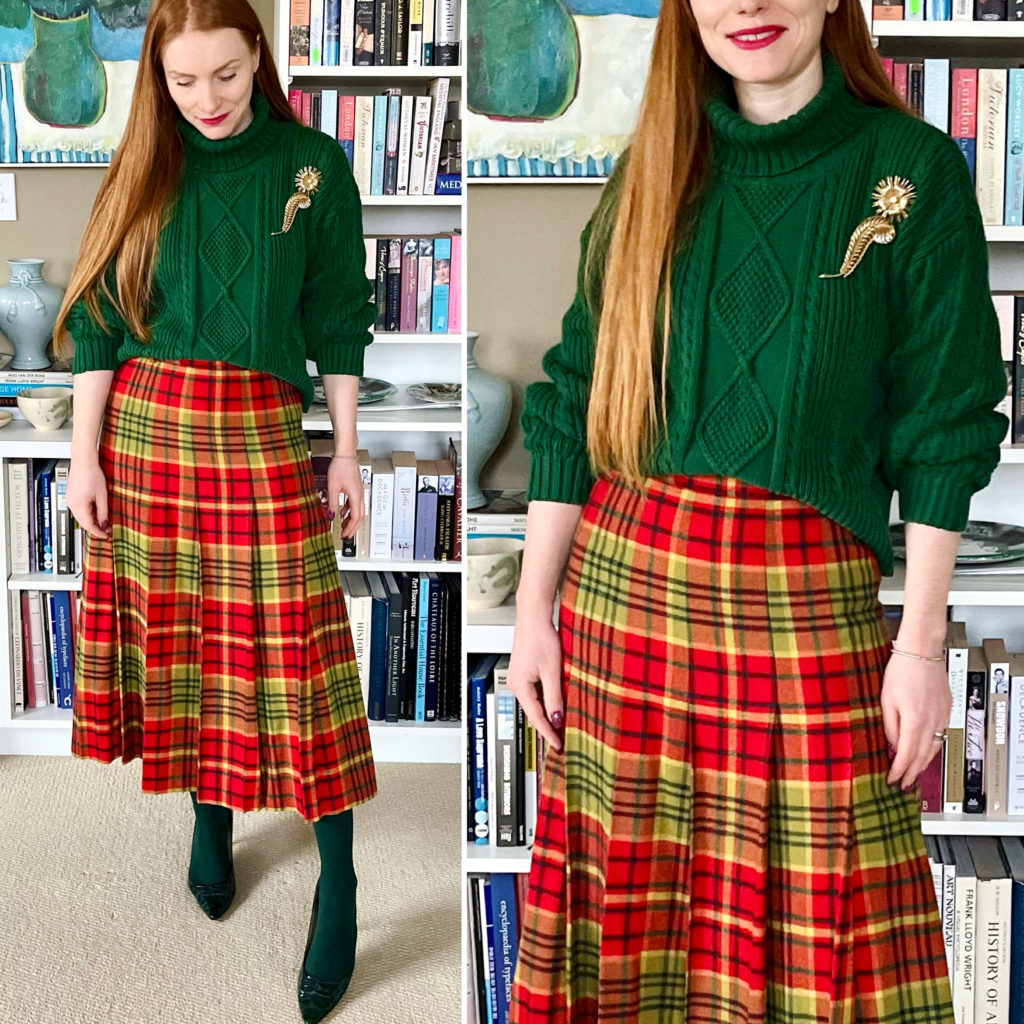
This one has a lovely weight and even some drape to it, and it is 0% itchy or scratchy.
Lest you think I am picking on Banana Republic here, I am not. The sweaters above are FAR from the worst I’ve seen. If anything, I think they are representative of the “better” tier of fast fashion (encompassing most higher end mall brands). Here is another Banana Republic offering, this one made with “Fine Italian Superloft Yarn by Filpucci”:
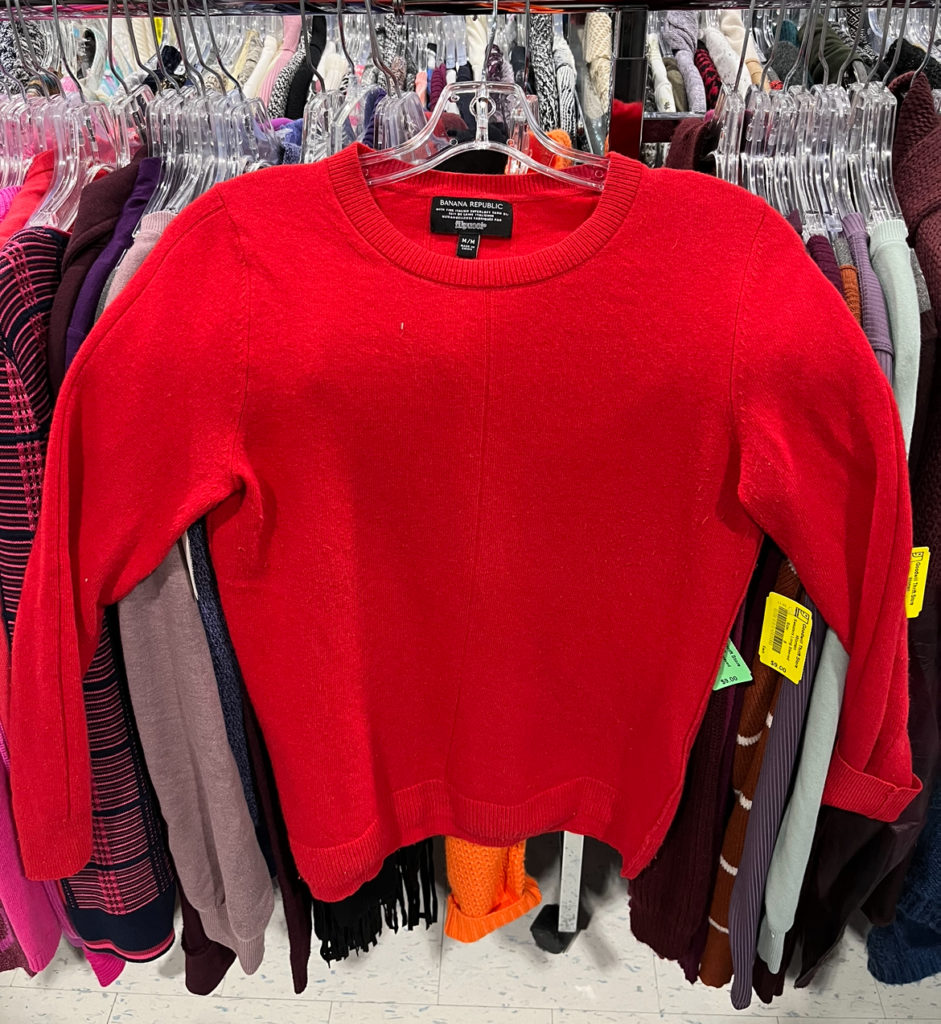
It looks a lot better, right? The hand-feel was better too, though by no means particularly special. My gut tells me this material would be prone to pilling and require reshaping after every wash (and forget any dryers!). Despite the fancy label, it’s actually also a blend: 45% merino extra fine wool, 25% rayon/viscose, 20% nylon, and 10% cashmere. It’s the rayon and nylon that worries me. Pass.
To prove that I am not picking on Banana Republic, here is a sweater that I did actually buy:
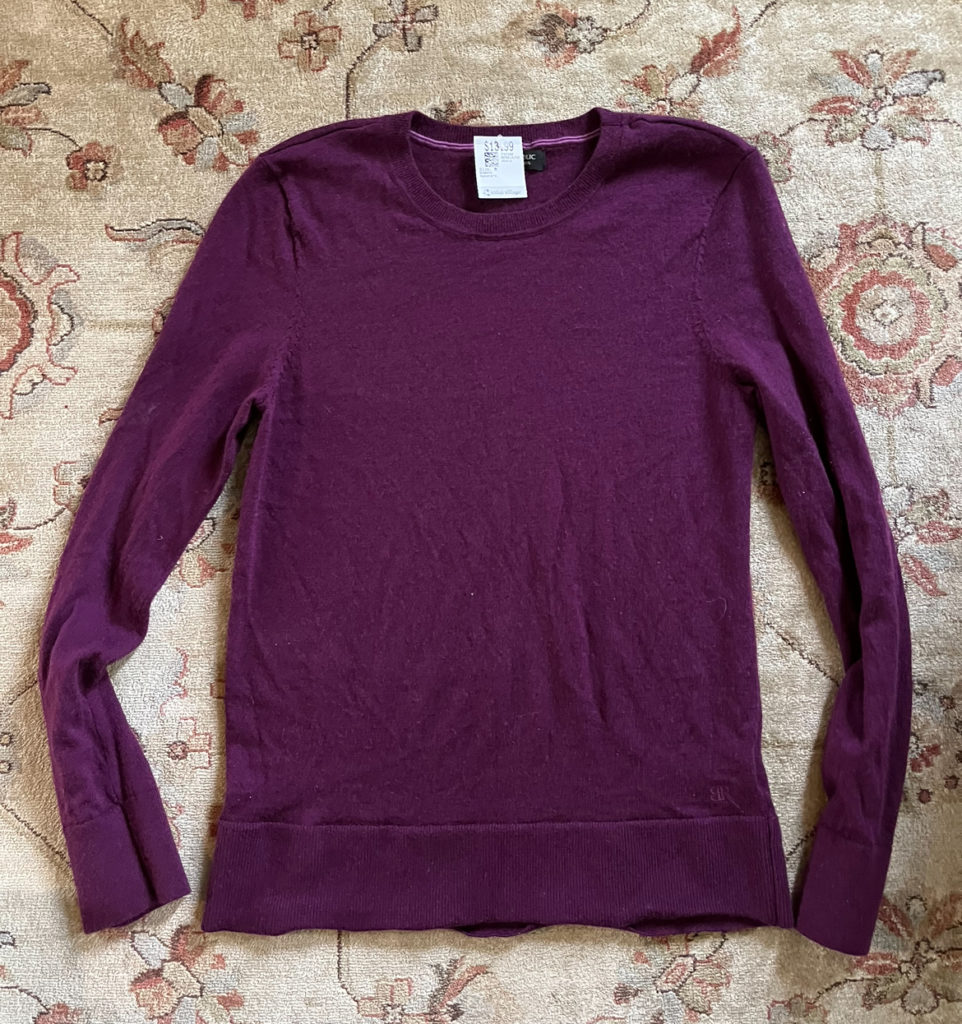
It’s 100% merino wool and I paid $13.99 (less 20% off coupon) which the same price as that very first sweater. But it’s a much better deal. I am not saying this sweater is amazing quality, but it’s not bad. Yes, there are some wrinkles — my fault, I had jammed it in a bag without folding it first — but these ones will come out easily with a quick steam. I personally find merino wool easy to wear right against my skin and it makes for good layers. In general, the smaller the wool fibers, the less itchy it is. Superfine merino wool fibers are relatively small so they are less likely to trigger people with sensitivities. This post from Pendleton explains the different types of wool in more detail. Because this sweater is a thin knit, it’s a piece I would wear under other things or over a tank top, at most; it’s not going to look good over bulkier base layers.
As further proof that I am not targeting specific brands, here is a whooper of a garbage sweater I recently spotted:
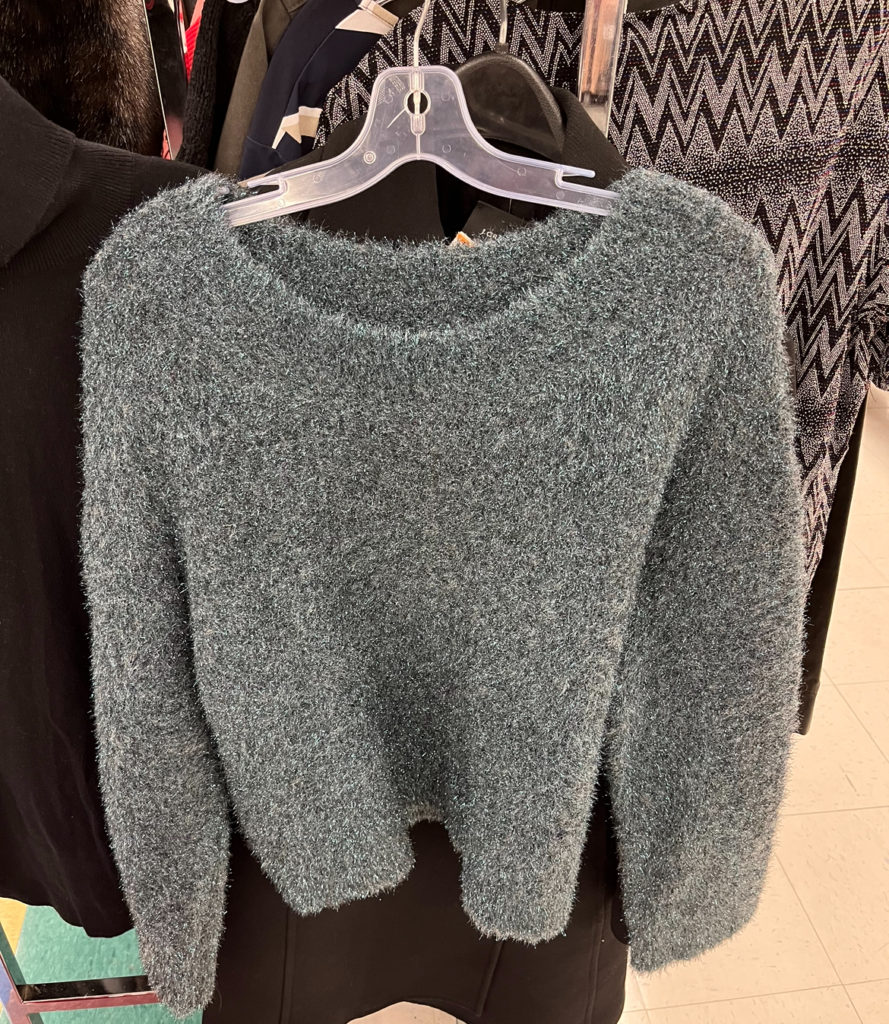
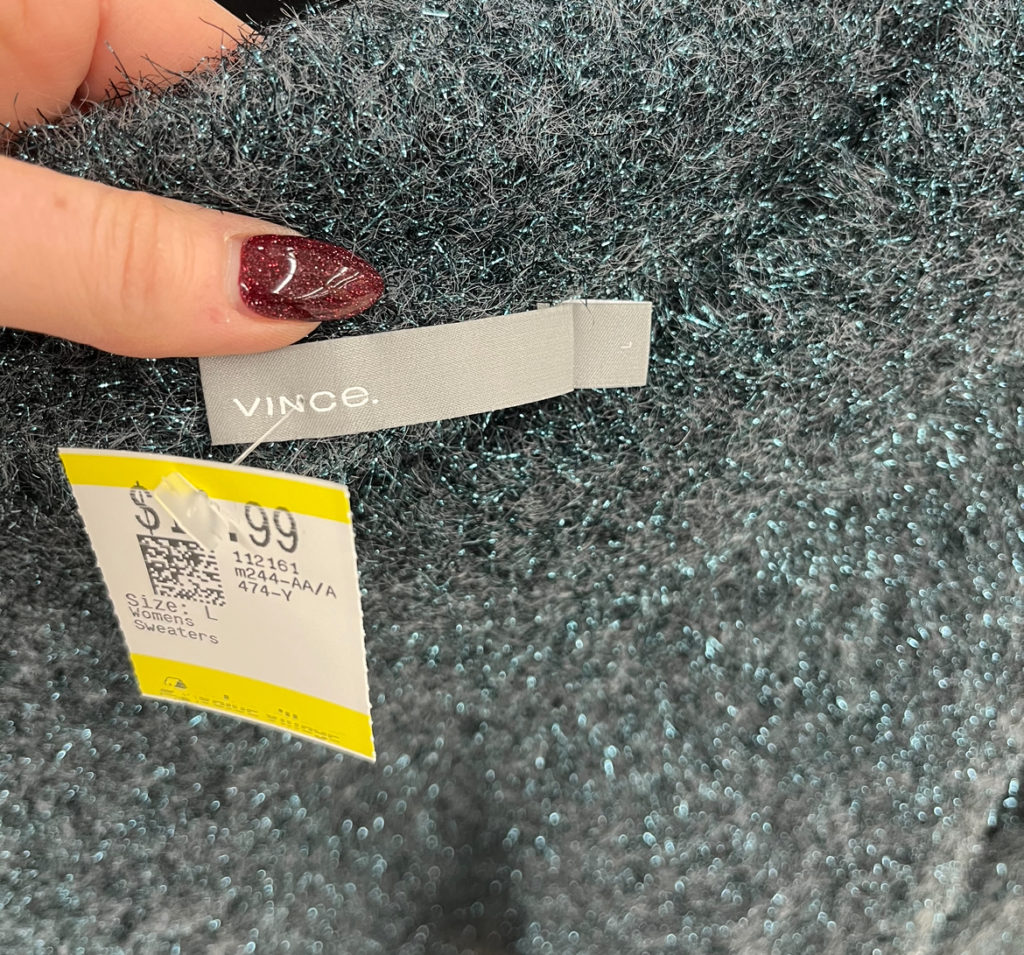
I will give it a little bit of credit: it actually looked nicer in person that in these photos, which don’t capture the gorgeous teal colour very well. It was an attractive looking sweater, especially from a distance. But as soon as I touched it, I recoiled. It feels like one of those Scotch Brite dish scrubbing pads. You can tell how itchy it’s going to be from how much the fibers stand up, rather than laying flat. And, no surprise, it is 100% plastic: 60% nylon, 40% metallic. And guess what, it’s Vince. This sweater probably cost at least $300 at full retail. It amused me that the tag mentioned “yarn origin: Italy” like that was somehow going to redeem this mess.
I could go on and on but I want to also talk about my favourite sweaters, so let’s quickly summarize the “best to avoid” list:
- Anything with synthetic content, however small, is a “use caution” situation. I do own some synthetic sweaters myself (chosen purely for aesthetics), but I buy them fully knowing they’re not very good quality and adjust my expectations accordingly. General rule of thumb: if it looks deeply wrinkly on the hanger, it’s a pass.
- Fuzzy sweaters — ditto the ones that look like spun cotton candy — are most likely to be wholly synthetic and while they might feel super soft and appealing, they have short-life span and will require careful laundering to have even a remote chance of looking decent after the first wash. I ain’t got time to baby synthetics, pass.
- Loose knits — the kind with a very open weave — are generally a sign that the brand is cutting corners and probably using cheap materials too. These will not hold up to long-term wear, and will be hard to maintain (for example, much harder to shave down if there is pilling).
- Coarse wool — especially mohair — can be more difficult to wear if you have sensitivities, though it can be a good layering option if you live in a very cold climate. I have a couple of vintage mohair blend sweaters but they are not my favourite because I do find them a bit rough and also too hot.
Ok, now let’s talk about the good stuff! Here is my shortlist before we dive in:
- Cashmere
- Cashmere-cotton (or cashmere-wool) blends
- Merino wool
- Wool-cotton blends
- Cotton
I would add lambswool to the list above but with an asterisk; it can be a bit itchy for me, so it depends on the style and how I plan to wear it. If it’s a chunkier or more oversized piece that I will wear over other thicker layers, it can be a thumbs up; I probably wouldn’t wear lambswool directly against the skin or even over a thin layer.
Cashmere (and cashmere blended with other natural fibers) is something I stock up on whenever I find it. Now, not all cashmere is equal either; the shorter the hairs, the more it’s going to pill. Pilling is an easy fix but nonetheless … some cashmere just feels more luxurious and thick, and that’s what I buy. We are not talking Brunello Cuccinelli here, ok? But Lord & Taylor, Talbots, and Lauren Ralph Lauren all make serviceable cashmere. Depending on the thickness of the material, I wear cashmere as a base layer (if thin) — it feels great against the skin — or as a top layer (if thick). It adds warmth and coziness without the itch factor.
As I mentioned above, merino wool is usually used for thin/fine knit sweaters. I wear them on their own, over very thin base layers (tank tops, thin cotton tops), or under thicker layers if I need extra warmth. Extra fine merino wool turtlenecks are my holy grail (and hard to find!) and are a staple layering piece for me in winter.
Wool cotton blends are a bit of a compromise, but I find them much more wearable than wool synthetic ones. Not my go-to, but a decent alternative; the cotton content can mitigate some of the itchiness factor of wool.
Last but certainly not least: cotton. I know this might be a controversial take, but next to cashmere, cotton sweaters are my absolute favourite. But let me be clear: I am talking about vintage cotton sweaters. The chunky knitted kind. Not the kind that looks like sweatshirt material. This kind:
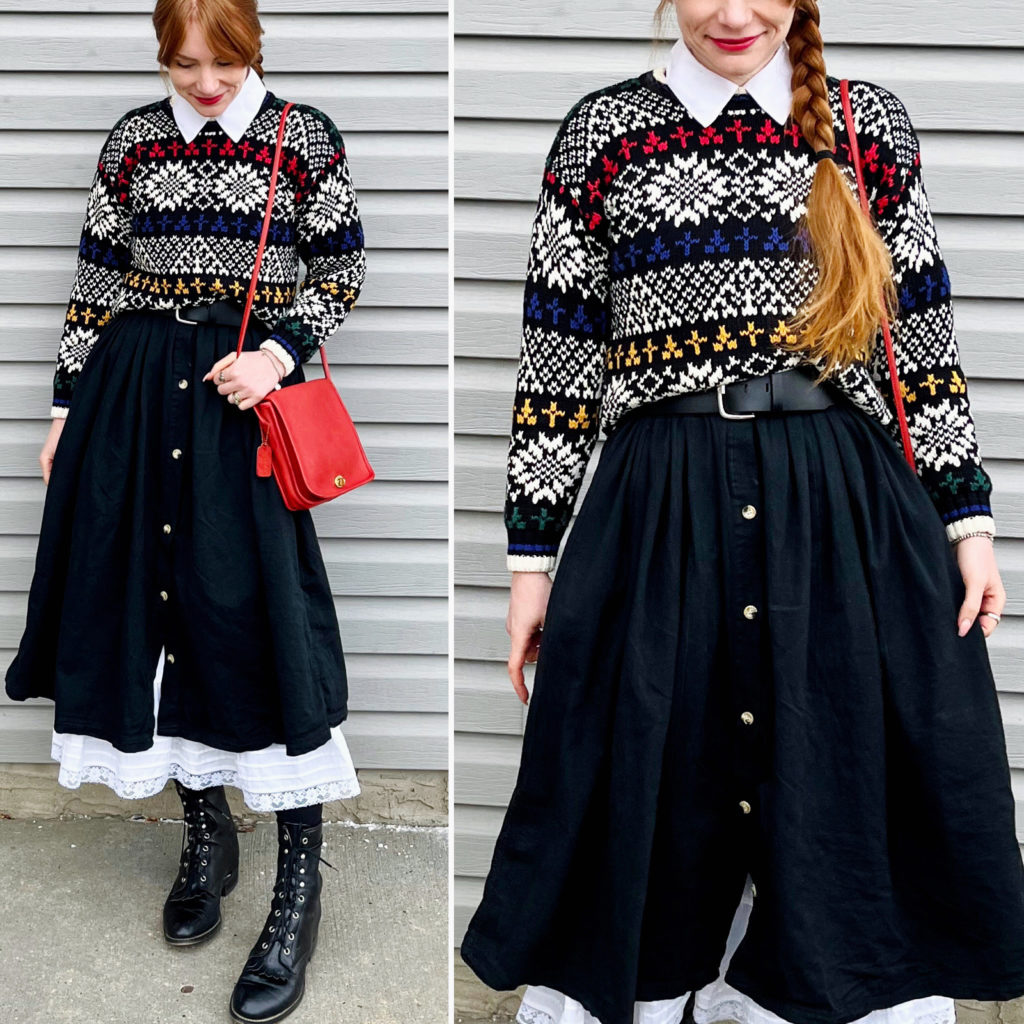
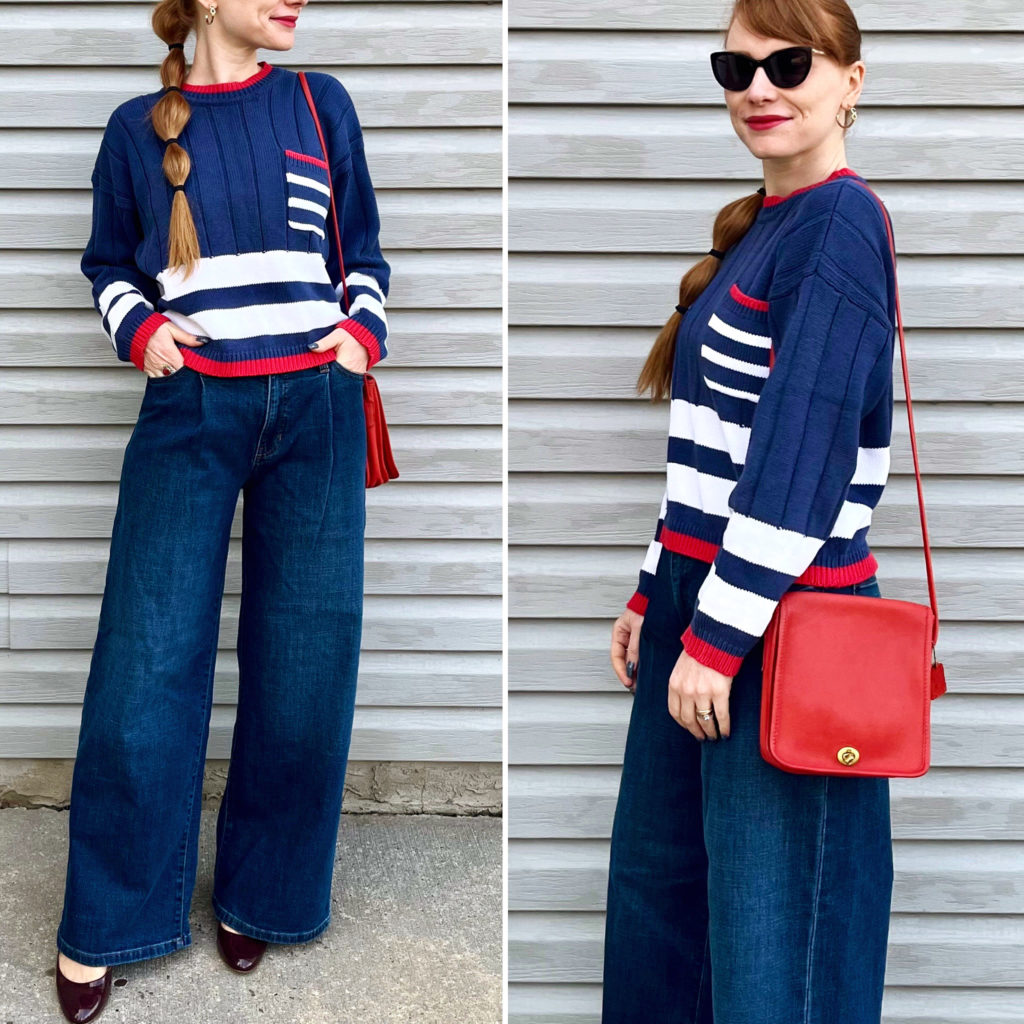
I cannot say enough good things about these sweaters. They are thick and cozy but never feel suffocating or too hot. I can wear them on warmer days without overheating, and in the depth of winter to feel snug and warm. And they’re not itchy at all! They are super easy to clean — I throw them in the washing machine and air dry them so they don’t lose their shape or stretch out (and they air dry much faster than wool). And the best part — though this is not a big concern in my geography — they are not susceptible to moths.
The bad news is that these cotton sweaters are becoming vanishingly hard to find. My holy grail is pre-2000 cotton sweaters from brands like Gap, Eddie Bauer, LL Bean, Ralph Lauren, and others like these. It annoys me so much that brands have stopped making the same style of sweaters nowadays. I assume it’s a cost issue, but I think this would be something worth paying a premium for. Oh well, I guess I’ll be stalking the vintages ones at the thrift stores instead.

